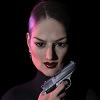HDRI software?
 wintoons
Posts: 381
wintoons
Posts: 381
Hi Guys,
I'm playing around with HDRIs and I've been trying to make my own. But I'm having alot of trouble with lighting.
Does anybody know if there is really good software which you can make your own HDRIs?
I use my iPhone for the photography and I use Photoshop trying to make HDRIs but it's a bit of a challenge.


Comments
I've never tried to get serious with an iphone camera, can you even take the sorts of photos needed for creating an HDRI with one? Every description of making them I've ever seen says you need pretty specific camera equipment.
You can. There is 360 camera apps you can download and I have tried them and they do work quite well. I have a iPhone 11 Pro and that really does a good shooting a wide lense shot.
What my problem is editing the photo and getting it right on DazStudio.
360º image is just that. It wont have enough depth to give good lighting like an IBL (Image Based Lighting) .hdr will.
Just stitching together a 360 image isn't an HDRI. The image has to be taken at a number of different exposures, and perhaps other settings, in order to get teh lighting info needed.
Hi wintoons,
To make a decent HDRI with an Iphone cam and PS = mission impossible, unless you are Tom Cruise, better find new process. I have tryed multiple iphone apps for 360º but no luck with good results, and the programs that do the stiching wont recognize the Iphone photo generaly. You can use the iphone to connect to cameras that make 360º photos but you need to buy the camera.
Here is alink that might help you.
http://blog.gregzaal.com/2016/03/16/make-your-own-hdri/
I don't know whether it is impossible, but at the very least you need a tripod so that you can take multiple exposures at different levels (assuming the iPHone does that - for ral, not adjusting after the fact) from exactly the same position, then rotate to take the next set of exposures and so on.
There's 'HDR Light Studio' software that you can use to simulate real studio lighting setups and create an HDRI for image-based lighting (they've a library of hdr images of the actual lights for you to use).
You load in the object, 'paint' it with various lights, export a rendered HDRI and you can load that as a dome light/environment map to light your scenes into any render engine (including IRAY).
Never really had an use for it myself, I'm perfectly fine with manually creating the lighting setups.
I know microsoft released an image stiching software a while back, there should be a few free tools out there by now though.
There are also a few good free hdr making apps such as luminance hdr, but you need over, normal, and under exposure images to make a real hdr.
You can make psuedo hdr images from 360 degree images though. Which means you fake the exposure values with photoshop.
You could load you images to google maps, they stitch them together and create a 360, then go to istreetview and download the software for creating a 360 image from googles panoramics.
One of the best ways to understand what a hdr is, is to load one into photoshop and play with the exposure settings to see what you would need to make an hdr.
If ya really want to dig into it:
https://blog.hdrihaven.com/how-to-create-high-quality-hdri/
You can also get dozens of great hdri's there.
Yes!
I made some HDRI 360° panorama (complete sphere) the "classic way" :
I use a panoramic head to take all the pictures covering the "full sphere" . Panoramic head give stability when you have plenty of pictures to take and also prevent parallax errors (you must turn on the Nodal point of the lens) My panaromic head is a Nodal Ninja (the most affordable!). If you have a fisheye you can take less pictures of course. All pictures must have the same exposition so your camera "manual mode" is mandatory. There also must be some overlapping between the pictures for the stitching tool
I use AutopanoGiga (not sold anymore) the make the assembly (stitching). This kind of tool also manage ghost part (e.g.: people moving between 2 pictures)
If I need an HDRI panorama: I take 3 expositions for each picture. APG can make 3 different exposition stiched panoramas perfectly aligned and create the HDRI final file
Then I can develop to get a LDRI image or use directly the HDRI file for lighting in my 3D scene
Long process but fun :-) !